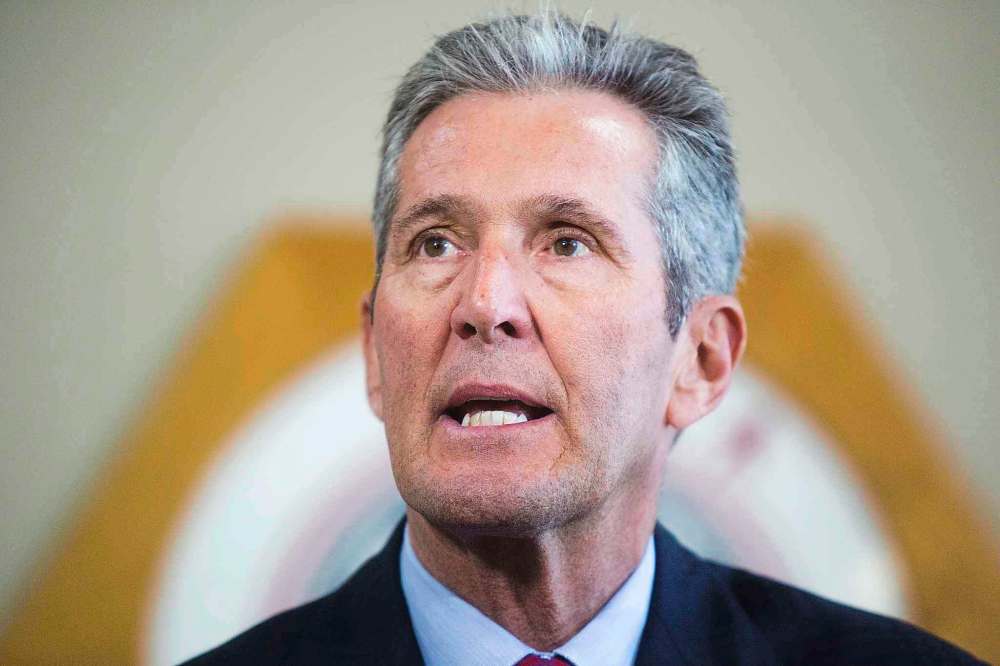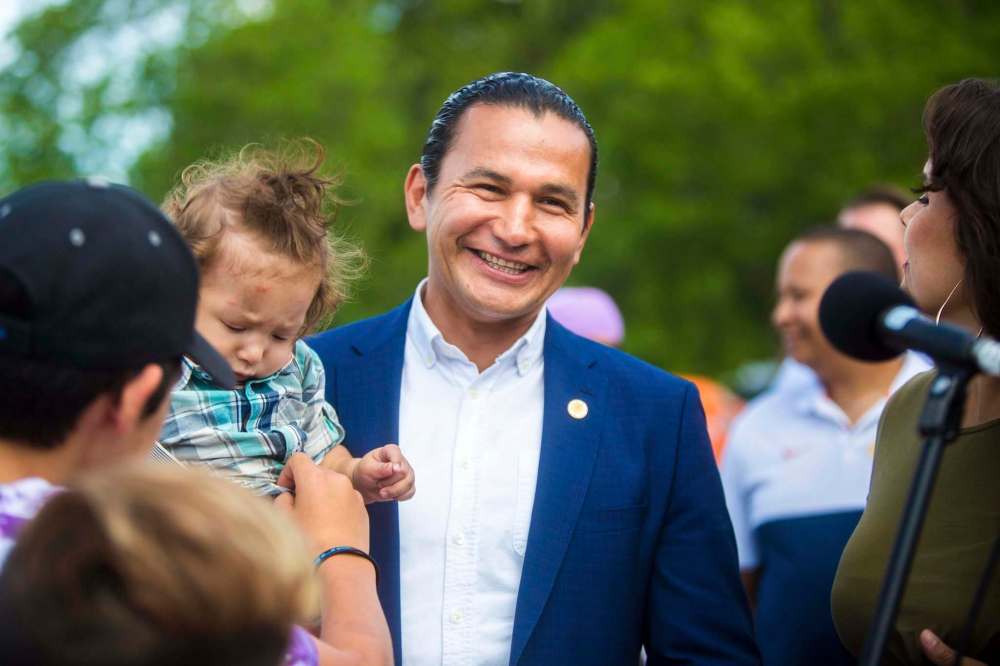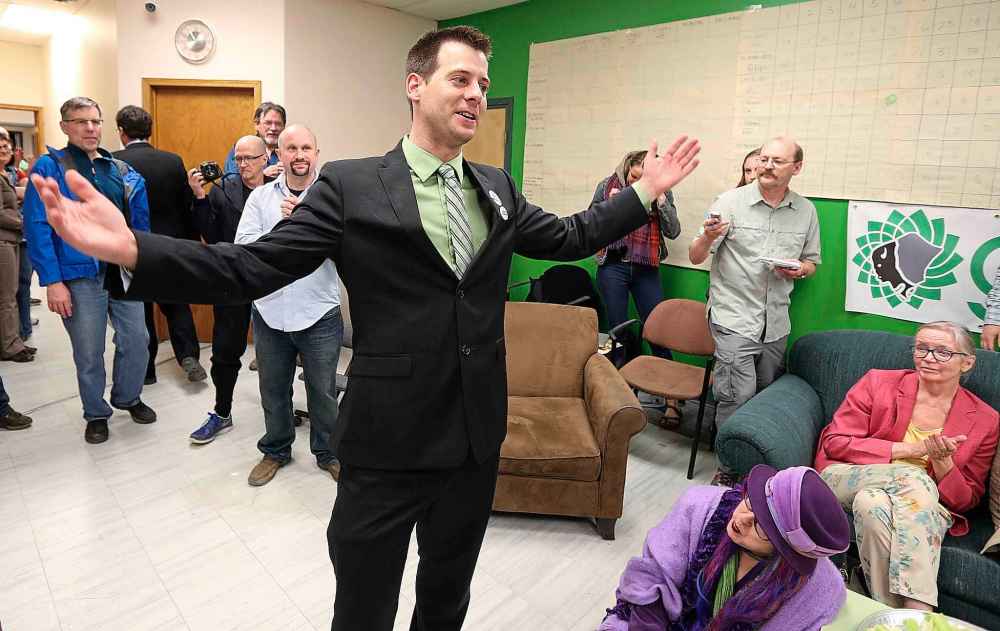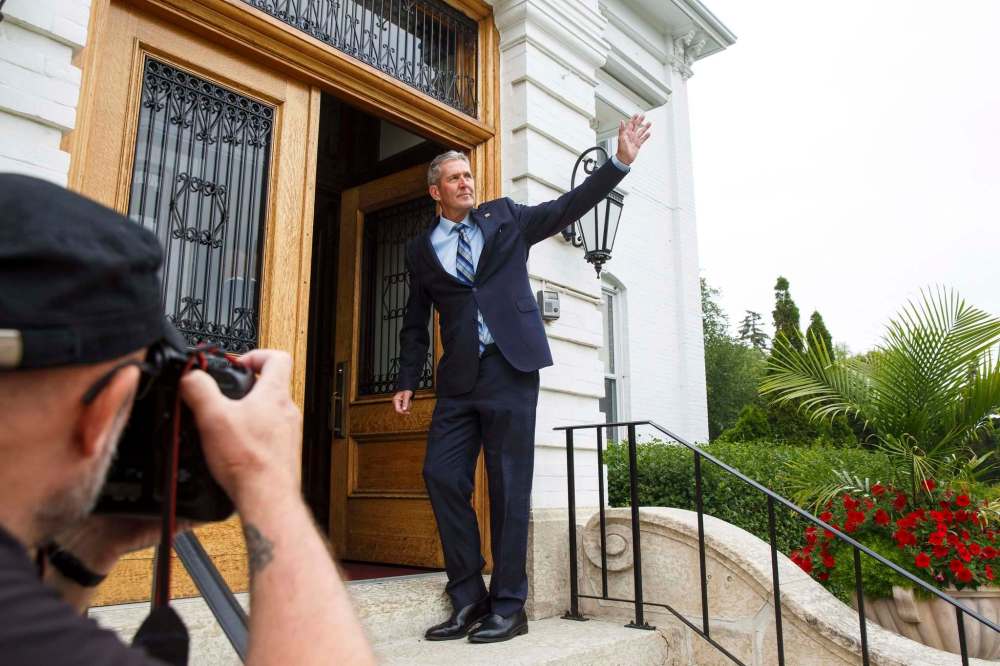The nitty gritty on Manitoba’s parties Strengths, weaknesses and everything in between
Read this article for free:
or
Already have an account? Log in here »
To continue reading, please subscribe:
Monthly Digital Subscription
$19 $0 for the first 4 weeks*
- Enjoy unlimited reading on winnipegfreepress.com
- Read the E-Edition, our digital replica newspaper
- Access News Break, our award-winning app
- Play interactive puzzles
*No charge for 4 weeks then billed as $19 every four weeks (new subscribers and qualified returning subscribers only). Cancel anytime.
Read unlimited articles for free today:
or
Already have an account? Log in here »
Hey there, time traveller!
This article was published 11/08/2019 (1718 days ago), so information in it may no longer be current.
Will Premier Brian Pallister and the Progressive Conservatives deliver another landslide victory?
Can NDP Leader Wab Kinew rally his party back from its collapse at the polls in 2016?
Will the Liberals, with Leader Dougald Lamont now at the helm, keep official party status? And can the Green Party of Manitoba win its first ever seat in the legislature?
With the official launch of the provincial election on Monday, we explore those questions and break down the strengths and weaknesses of the four parties.
Progressive Conservatives

Seats won in 2016: 40
What the party needs to do:
It will be difficult for the governing party to match its lofty seat total from the last election, but it doesn’t need to do this to retain a comfortable majority in the legislature.
After more than 16 years in office, the NDP had worn out its welcome with Manitoba voters and even traditional New Democrat seats fell to the PCs. That’s unlikely to happen to the same extent this time.
While Brian Pallister has said he will criss-cross the province, travelling at least 8,000 kilometres in the process, expect him and his party to focus their efforts on the Winnipeg suburbs that won them the election in 2016.
The Tories took back big portions of southeast, northeast and west Winnipeg that they held during the Filmon government years, and those areas hold the key to the election.
Expect the Conservatives to emphasize pocketbook issues in their bid to retain these seats. That means reminding voters of the July 1 reduction in the PST, the modest income tax cuts they’ve introduced and the lowering of ambulance fees, while substantially reducing the deficit.
Also expect the PCs to continue to run negative ads against the NDP and its leader, reminding voters that taxes grew under the New Democrats and focusing attention on Wab Kinew’s past run-ins with the law.
Strongest suit:
Under Pallister, the Conservatives have tackled the government’s operating deficit with a laser-like focus, convincing bond-rating agencies they’re serious about balancing the province’s books by the end of a second term in office, if not sooner.
Where they’re vulnerable:
The jury is out on whether the Pallister government’s hospital reform plan will make the system more efficient and reduce wait times.
Tory MLAs in constituencies near Concordia Hospital, such as Rossmere and Radisson, were especially feeling the heat from voters as the facility’s ER was slated to close. They and others could be vulnerable if constituents fear the hospital changes will hurt health care rather than improve it.
Fun fact:
No political party has won more seats in a Manitoba general election than the Tories did in 2016, although the 1915 Liberals were also victorious in 40 constituencies (at the time, there were 47 seats).
New Democrats

Seats won in 2016: 14
What they need to do:
NDP Leader Wab Kinew will need to run a near-flawless campaign if his party is to make serious inroads in the PCs’ huge majority.
Expect New Democrats to focus on what they feel is the Tories’ most vulnerable file: health. The NDP will make the government’s controversial hospital reorganization plan in Winnipeg a major election issue. Already, the party has promised to reverse the closures of the Seven Oaks and Concordia emergency rooms.
After more than 16 years in power, the NDP won fewer seats in 2016 than in any election since 1988, when they took 12. The road back from this humiliating defeat begins with retaking formerly ‘safe’ NDP seats, such as Thompson, Brandon East, Burrows and Transcona, while retaining the meagre number they won in 2016.
There’s a lot on the line for Kinew, who is leading a political party for the first time in a general election. He will likely have to win from 18 to 20 seats to survive a leadership review following the vote.
Strongest suit:
The NDP, for many, is still seen as the party that will protect public health care, social services and Crown corporations.
Where they’re vulnerable:

The NDP is still being weighed down by the legacy of the Selinger government, which raised taxes and ran up large operating deficits. Kinew is carrying some personal baggage of his own that includes past brushes with the law, including 16-year-old domestic assault allegations that he’s denied.
Since 2016, the New Democrats have lost two MLAs, leaving them with 12 heading into the this election. (After Greg Selinger retired from politics, the NDP lost St. Boniface to the Liberals in a byelection. And the party kicked Mohinder Saran (the Maples) out of caucus over allegations of sexual harassment. Saran finished the term as an independent.)
Four party veterans — Rob Altemeyer, Flor Marcelino, James Allum and Andrew Swan — are not seeking re-election.
So, as the NDP attempts to hold the seats it has and add to its total, it will be running only eight incumbent candidates.
Fun fact:
The last permanent NDP leader who failed to become premier was Russell Paulley (1961-1969). (Flor Marcelino served as leader in an interim capacity for 16 months in 2016 and 2017.)
Liberals

Seats won in 2016: 3
What they need to do:
In 2016, the Liberals seemed poised for a breakout campaign as voters had grown tired of the NDP after more than 16 years in office. The party fielded a significant number of quality candidates, but, under Rana Bokhari, ran a disastrous campaign.
This year, if several weeks of unofficial campaigning are any indication, the Liberals, under Dougald Lamont, are much better organized, have spent a lot more time developing their platform and are responding rapidly to their competitors’ policy announcements.

While the 2016 Liberals held just one seat going into the election (Jon Gerrard’s in River Heights), they have four as the formal campaign begins this time around.
Lamont’s byelection win last summer in St. Boniface gave the party four seats in the legislature and party status, meaning access to greater caucus funding and the ability to ask more questions during question period. Having their leader in the legislature for the first time in several years helped to boost the party’s profile.
The Liberals must build on that momentum as they attempt to win voters who may be fed up with Manitoba’s two main parties.
Not only will Lamont have to continue to offer solid policy ideas, but he will also have to be prepared to say how much they will cost.
Another measure of party organization and party discipline is being able to field a full slate of candidates, something the Liberals failed to do in 2016, when they ran 51.
Posted: Manitoba Liberals say the NDP and PCs have ignored the province’s cultural industries and infrastructure. Liberals release arts and culture plan

Strongest suit:
The Liberals have issued policy announcements that distinguish them from their two main competitors. While they have a tiny war chest compared with the PCs and NDP, they’ve been giving voters lots of ideas to consider.
Where they’re vulnerable:
Unlike the 2016 election, which occurred six months after Justin Trudeau took office federally, the provincial Liberals can’t expect to ride on the coattails of their federal cousins. Liberal popularity nationally is down. And, one of the party’s four incumbents — Judy Klassen — is not seeking re-election in Keewatinook, leaving the seat vulnerable to a takeover by the NDP. Klassen has decided to run federally.
Fun fact:
Dougald Lamont’s grandfather, John (Bud) Lamont was elected as an MLA in 1936.
Green party

Seats won in 2016: 0
What they need to do:
Canadians have been taking a closer look at what the Greens have had to offer in recent years.
Nationally, the party has two members in the House of Commons. With three seats in British Columbia, the Greens hold the balance of power in NDP Premier John Horgan’s minority government. In Prince Edward Island, the party won eight seats in the 27-member legislature in an election this year, good enough to make it the official Opposition party.
The Greens have never won a seat in Manitoba, but came close in 2016 when David Nickarz lost to the NDP’s Rob Altemeyer by only 392 votes.

Nickarz, a small business owner who renovates and retrofits houses, is running in Wolseley again this year, but whether he has better success against the NDP’s Lisa Naylor, a Winnipeg School Division trustee, remains to be seen.
Wolseley represents the Greens’ best chance at a seat, and the party would do well to concentrate its resources there and in perhaps a few other seats where it can make gains.
Even gaining a single seat in the Manitoba legislature would boost the party’s profile, giving it a regular soap box instead of being largely forgotten between elections.
Greens tout carbon tax, guaranteed income, better health care in campaign platform

Posted:
The Green Party of Manitoba would introduce a $50-per-tonne carbon tax, launch a guaranteed-income program to lift thousands out of poverty and target greater funding for mental-health and preventative-health initiatives.
The Greens are led by lawyer James Beddome, who is running against Wab Kinew in Fort Rouge. The party has released a broad outline of its platform, which it plans to flesh out in the coming weeks.
In addition to offering ideas on how to protect the environment and reverse climate change, the Greens propose a guaranteed annual wage, free public transit, and an increased emphasis on mental health services, as well as preventative and community-based health care.
A Probe Research poll in June had the Greens in a virtual tie for support among decided voters with the Manitoba Liberals, at 14 per cent compared with 16 per cent for the Grits.
In an election in which the governing party is not particularly vulnerable, some voters may be more likely to try out a new party.
Strongest suit:
Beddome is a strong speaker who will more than hold his own at party leadership debates.
Where they’re vulnerable:
If the election turns out to be an actual horse race between the PCs and the NDP, the Greens will be less likely to win a seat.
Fun fact:
The Greens finished second in four constituencies in 2016, although they only challenged for a seat in Wolseley.
larry.kusch@freepress.mb.ca

Larry Kusch
Legislature reporter
Larry Kusch didn’t know what he wanted to do with his life until he attended a high school newspaper editor’s workshop in Regina in the summer of 1969 and listened to a university student speak glowingly about the journalism program at Carleton University in Ottawa.




















